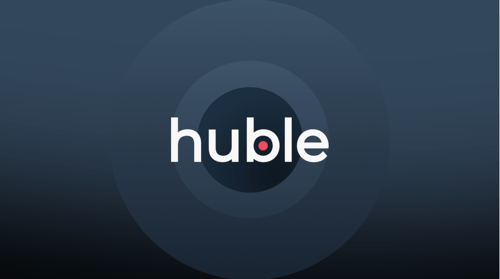The most important tool a B2B company can have in the modern, digital-first era is a website.
A website enables businesses to educate and advise website visitors on specific topics, to advertise products and services, to engage with interested parties outside of standard working hours, and to help website visitors understand what it is they do.
In the past, website development used to be a costly and resource-intensive affair; only the largest and most successful business enterprises had the time and money to construct a large website. Nowadays, however, website development is much cheaper and far more accessible thanks to easy-to-use content management systems.
But despite website development being easier and more affordable, for some businesses, SMEs and start-ups especially, developing a new, high-quality website is still too expensive. Every business today understands the importance of having a high-quality, multi-page website – after all, it’s increasingly the first point of contact with prospects – but not every business can afford to build or invest in a large website at once.
Instead, these businesses opt to construct a simple one-page, brochure-type website in the interim, and throw all of their product/service information onto it, mistakenly believing this simple, one-page website will allow them to generate leads.
They don't.
In the modern, digital-first world, you must invest in your website.
Static, brochure-type websites are just not enough
The thing is, it’s important to appreciate the fact that B2B prospects are looking for the right solution to a very specific business problem; and to find the solution to that problem, they will thoroughly investigate a business’ website – reading blogs, eBooks, whitepapers, case studies, product pages and other assets – to understand what it is the business does and whether or not that business has the solution they need.
If a business’ website is just one static page, with no depth of content to showcase the business’ expertise and understanding of the website visitor’s business problem (typically achieved through as little as a blog), they will very quickly click off the website and look elsewhere.
To actually engage with website visitors and retain their interest, B2B websites must serve as a media company containing all the information interested parties need; they must provide them with everything they need to make an informed purchase decision; they must include high-quality content that provides website visitors with answers to their most salient questions; and they must include other ways for website visitors to engage with the business.
Having all of the above information on a one-page website is not only impractical but also unsustainable. Imagine how long website visitors would have to scroll to find the information they are looking for.
Your website is an ongoing investment!
You might start with a simple, one-page brochure-type website but as your business grows you will need a website that is able to support your future business activity – and this means more content and more web pages.
You must accept the fact that your website is not for you – it’s for your customers and potential customers. Your website is meant to engage, educate, and encourage action.
With this considered, having a multi-page website will not only allow you to produce more content to answer the questions that your potential prospects have (both engaging and educating them) but also help you to move them through the sales cycle (using CTAs and landing pages) – more on that here – and increase the amount of targeted traffic being driven to your website as you optimise new pages for specific keyword terms.
Also, by investing in your website and structuring it accordingly (rather than having all of the information on one page) your website visitors will be able to easily find what they need and complete specific actions on your website.
As you expand your business over time, you invest in your website and expand it. Your website then includes your new service offerings and products, helping to support your sales activity. Eventually, you get to a point where you can integrate advanced tools, such as marketing automation, to further enhance your website and personalise the experience for website visitors – all of which is impossible with a one-page, static website!
It might sound strange but… don’t build your whole website in one go
Many businesses, after realising they need more than just a static one-page website, go “all in” with website development, trying to create a multi-page website for their business as quickly as possible. The problem, however, is that a traditional approach to website redesign is costly and time-consuming. More often than not, those that take a traditional approach to website design end up spending a year (sometimes more) developing their new website – and all the while having no website to show to the outside world.
There is, however, a more cost-effective, results-driven approach, an approach that allows you to build a prospect-orientated website in just twelve weeks. It’s called Growth-Driven Website Design. Rather than build a brand-new website in its entirety, Growth-Driven Design is all about building the most strategically-effective website – a website comprised of a business’s most important/top-performing pages – in the shortest possible period of time.
Growth-Driven Website Design is an iterative development process, you identify your best pages, analyse them, and use that information to refine your approach to building future pages. With Growth-Driven Website Design, your website is constantly growing as your business does and will include new, high-quality pages that are optimised for specific keywords, giving you more opportunities to be found by interested parties online.
If you want to find out more about Growth-Driven Website Design, click here.
Start investing in your website – you can’t afford not to
Investing in your website must be at the top of your business’ agenda when it comes to marketing and sales activity. Your website is your best tool and salesperson and naturally, you want to ensure it is equipped with everything it needs to make marketing and selling your business as easy as possible.
As you begin to integrate more advanced tools such as marketing automation into your website, you can use things like chatbots, workflows and lead scoring to help scale up lead generation and engagement on your website. Chatbots can help to direct website visitors to relevant pieces of content and provide tailored responses to help them; workflows can automate your lead qualification and move prospects through the sales cycle using timely interactions; and lead scoring tools can help you to understand which leads are ready to be engaged with.
All of this is simply not possible with a one-page brochure-type website. Invest in your website. Don't delay.
Don’t settle for a one-page, static brochure-type website that fails to provide website visitors with the information they need; invest in your website and empower your website visitors to make it easy for them to make informed B2B purchase decisions!

.png?width=1600&height=800&name=15%20(1).png)







-3.png?width=500&height=320&name=Matt%20-%20imagery%20bank%20(8)-3.png)

